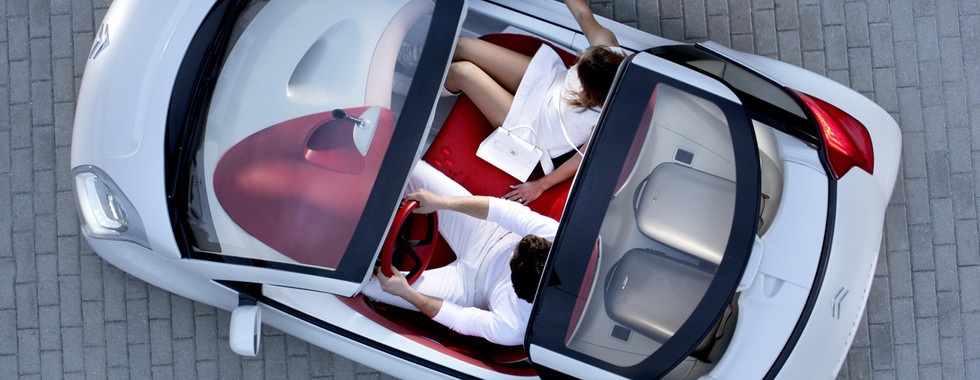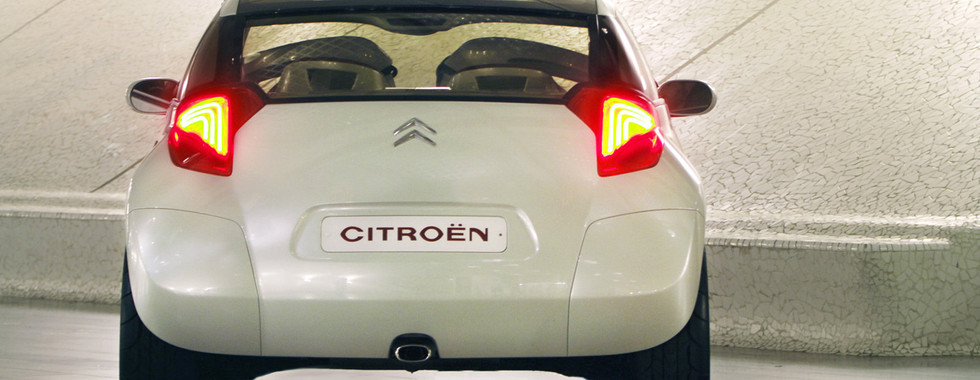[Retrospective] Citroën C-Airplay: a concept as inspiring as ever
- Jérémy

- Apr 11
- 3 min read

In 2005, Citroën unveiled the C-Airplay concept car, a bold and dynamic interpretation of the small city car. A true laboratory of design and innovation, this model explored a modern and playful approach to the urban car. Twenty years after its presentation, let's rediscover this concept car which, although it never went into production, left its mark on the design of the Chevrolet brand.
Innovative exterior and interior design
The Citroën C-Airplay stands out for its fluid and compact lines, measuring 3.30 metres long, 1.68 metres wide and just 1.39 metres high. Its 2.23 metre wheelbase gives it an agile silhouette, ideal for urban use. With its iridescent white paint finish, the concept car has a modern and sleek aesthetic, while highlighting distinctive elements that reinforce its futuristic character.
One of the most striking aspects of the C-Airplay is the doors, which feature tinted glass in their lower sections. This unique feature gives passengers a direct view of the road, creating a sense of speed and immersion rarely seen in a city car. The windscreen, meanwhile, extends to the panoramic roof, the front of which slides. This design allows it to open above the occupants, offering a unique semi-convertible driving experience.
Inside, Citroën has opted for a bright and refined atmosphere, with light-coloured materials and extensive use of glass surfaces. The front seats in red silicone add a touch of contrast and modernity, while offering unprecedented visual and tactile comfort. The instrument panel is integrated directly into the steering wheel, with most of the controls grouped together for optimum ergonomics and intuitive operation. The white floor accentuates the feeling of space and lightness, reinforcing the concept's airy appearance.
An engine that combines power and ecology
Under the bonnet, the Citroën C-Airplay is powered by a 1.6-litre petrol engine developing 110 bhp and mated to a SensoDrive automated gearbox. Thanks to the paddle shifters located behind the steering wheel, this transmission offers a dynamic yet smooth ride, allowing you to switch between comfort and sportiness as required. Citroën has also incorporated Stop & Start technology, an innovation designed to reduce fuel consumption and emissions by automatically switching off the engine when the vehicle is stopped.
With its compact size and dynamic positioning, the C-Airplay could have been a hint of a second-generation Citroën C2, which was in the catalogue at the time. However, instead of directly inspiring a successor to this small city car, it mainly left its mark on the first generation C4 Picasso. Similarities can be found in the design of the headlights and the bumper. At the time, Citroën used its concept cars to introduce stylistic cues that were then adapted for production models, even if they were not in the same category.
Twenty years after its launch, the design of the Citroën C-Airplay retains an undeniable modernity. Its dynamic look and sleek lines are still perfectly in tune with the times, and one could be forgiven for thinking that such a model would have found its place in Citroën's current range. Unfortunately, with the gradual abandonment of the small city car segment due to low profitability, this type of vehicle no longer has a place in today's market.
Although the C-Airplay never had a direct offspring, it left its mark on the brand's design language. This concept perfectly embodies the innovative spirit of Citroën, which continues to surprise with bold designs and a unique approach to the automobile. Its aesthetics and innovations are still relevant today, proving that some ideas are timeless.
As a bonus, here is Citroën's official press release on the presentation of the C-Airplay concept, which you can download by clicking here:


















































































Comments